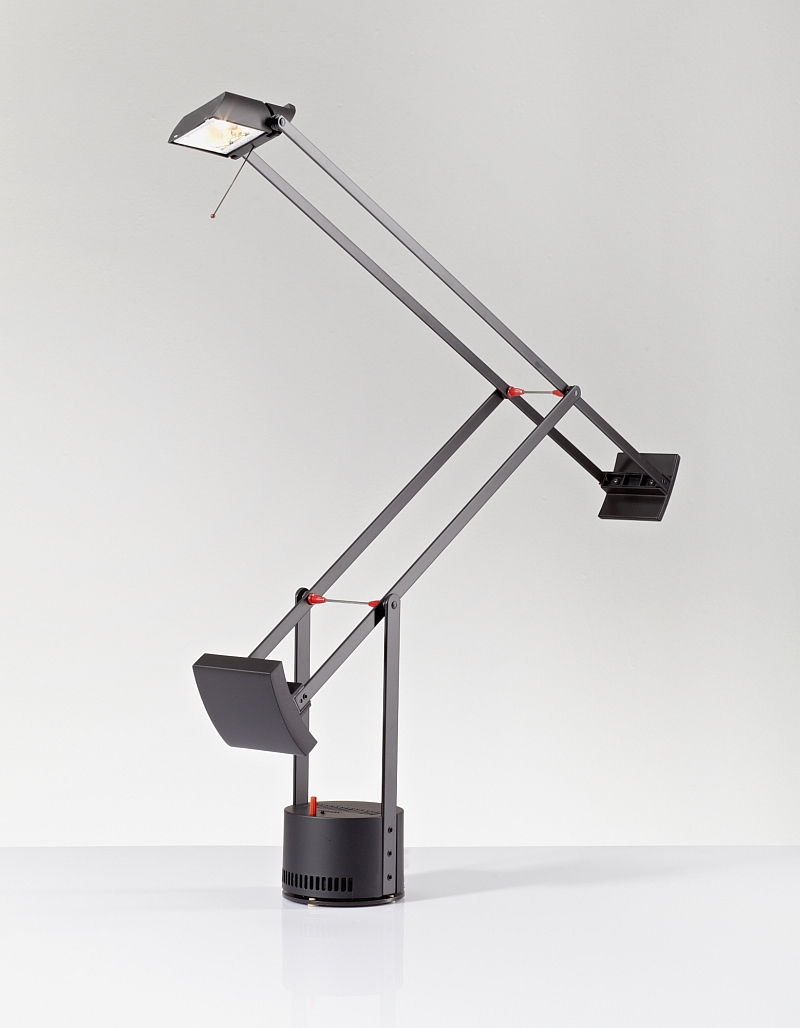Artemide | Designer | Producer | Product | Weil am Rhein
With the winter solstice behind us and the days growing noticeably longer, the Vitra Design Museum exhibition Lightopia draws slowly towards its natural end.
But before the lights finally go out on March 9th there are still a few genuine highlights in the Fringe programme to be enjoyed, including on Thursday January 23rd a talk with and about the Milan based designer Richard Sapper.
Born in Munich in 1932 Richard Sapper has worked with and for companies as varied as Daimler-Benz, Kartell, Siemens and Alessi, has created televisions, telephones, chairs, espresso machines, bookcases and telephone boxes, in addition to perhaps his best known work - and unquestionably the basis for the invitation to the Vitra Design Museum - the 1972 lamp Tizio for Artemide.
The idea behind Tizio is as simple as it is egoistic "When working or reading I like it when the light only shines on the piece of paper in front of me, with the rest of the room in half-darkness. Under such conditions I feel myself more at ease and and can better concentrate." That such a lamp didn't exist, Richard Sapper designed it. And, fortuitously, Artemide were impressed enough to manufacture it.
Making use of a double articulated arm concept, the ingenuity of Tizio lies in the fact that the balance and movement of the two arms is regulated by a counterweight system. No springs, no steel cables, no screws to tighten. As such Tizio can be effortlessly moved into practically any position. With one finger if need be. This freedom of movement is aided by the lack of wires: the electricity flows through the frame, the mains electricity having first been converted to low voltage through a transformer in the base.
In addition, and appropriately given the part focus in Lightopia on the effects on lighting design of the EU's decision to ban conventional light bulbs, Tizio was one of the first lighting objects to make use of a halogen lamp - a light source that in the 1970s was almost exclusively used in car headlamps. Or as Richard Sapper told the German Newspaper Die Zeit in 2010 "If you needed a new bulb for your Tizio, you went to the petrol station to buy one."
Unconventional as it is ingenious it took a while before the public were ready to accept the object. According to Artemide founder Ernesto Gismondi, in its first year on the market Tizio sold only 1000 examples, in the second year just 500. However in the intervening four decades Tizio has not only advanced to become one of the more popular and commercially successful lighting design objects, but also one of the most copied, and according to Gismondi Artemide pay a small fortune every year taking on the plagiarists. Wherever they find them.
In the course of the evening Richard Sapper will no doubt expound in more detail on all these aspects of Tizio, as well as talking more generally about his 60 years as an industrial designer and presenting his views on the current state of the design industry.
If you can make it, we would recommend you do.
Lightopia Talk. Richard Sapper - Lifetime Oeuvre takes place at the Vitra Design Museum, Weil am Rhein on Thursday January 23rd at 6pm. Entrance is free.
